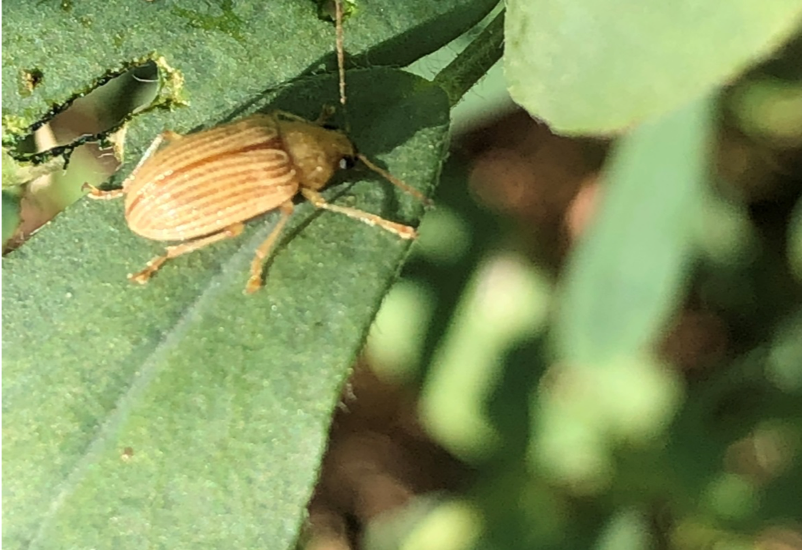
|
|
|
|

|
|||
|
|
|||
Fall melon planting is getting close and local fields are being prepared for planting. Growers and PCAs are well aware of cucurbit yellow stunting disorder virus (CYSDV) and the impact it can have on fall melons. This whitefly transmitted crinivirus was first identified on desert melons in the fall 2006 where widespread infections on cantaloupes, honeydews and other melons occurred. CYSDV can cause significant losses in melon fruit yield and quality, and without question, desert melon crops have been seriously affected by this virus. Melon IPM has also been impacted by CYSDV where insecticide usage on fall melons has increased significantly. We have been studying the epidemiology of CYSDV for over 10 years in an attempt to understand the complex relationships between the virus, vector and our local cropping system. Our ultimate goal is to develop practical approaches for reducing CYSDV impact on fall melon production. In addition, we continue to develop new information on chemical control of the whitefly vector (Bemisia whitefly adults). Last fall, whitefly populations were lighter than normal, and CYSDV incidence on fall melons was the lowest we’ve recorded on melons since the virus as first reported 11 years ago. Thus far, whitefly numbers this spring and summer have been relatively light compared to previous years. Although, the incidence of CYSDV was generally light on spring melons., it was still present in many fields. How these low numbers translate into virus incidence on the fall melon crop is unknown? Regardless, experience suggests that growers should anticipate CYSDV to be present. Further, given the aggressive management programs that PCAs and growers are now using, it will be interesting to see how CYSDV impacts melon production this fall. We’ll be tracking both whiteflies and CYSDV incidence again in 2017. Our research to date suggests that fall melons produced near cotton or near areas where spring melons were recently produced are at the highest risk of infection. When possible, growers should attempt to isolate fall melon plantings as far away as possible from these sources of whiteflies and CYSDV. Growers forced to plant fall melons near these crops should be vigilant in minimizing adult whitefly infestation levels with insecticides during pre-bloom growth stages. To view a summary of the status of CYSDV in Yuma County and guidelines for management visit Guidelines for Whitefly and CYSDV Management on Fall Melons. | |||
| Back | |||
|
For questions or comments on any of the topics please contact Marco Pena at the Yuma Agricultural Center.
|
|||
|
Home |
Cotton | Veggies |
Forages | Grains
| Citrus |
Crop x Crop Insects | Diseases| Weeds | Pesticides | Economics | News | Weather | Research | Photos | Contacts | General Info. Copyright © 2001 University of Arizona, College of Agriculture and Life Sciences Webmaster: Al Fournier (acis@ag.arizona.edu) |
|||

